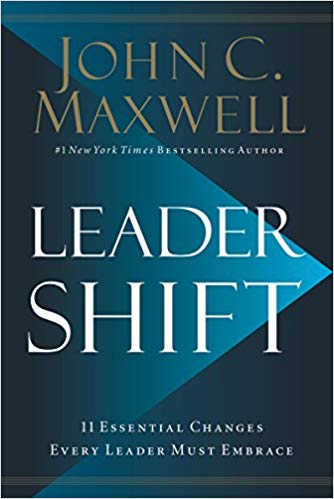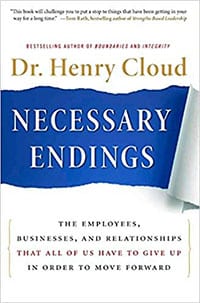
I’ve got three young boys and they love magic. Or at least, they think they do.
Illusions and sleight of hand are irresistible to them. They love the ease with which the magician violates all known laws of physics. Oh, and save your breath—there’s no convincing them that “real” magic hasn’t taken place. After all, they saw it happen right in front of their eyes.
It’s cute in kids.
It’s a little harder to stomach in adults.
These days, news headline after headline reverberates with stunned indignation over the fall of successful companies and leaders. They seemed larger than life… so productive, so talented, so powerful. How could this have happened?
How many more times must we fall for the sleight-of-hand success instead of learning to identify and value genuine substance in leadership?
The mesmerization with outward success is a problem that has plagued humanity across history, cultures and geography. Fortunately, we have time-tested wisdom that can help us move forward in our journey of understanding and identifying genuine success.
One of the dominant themes of the Bible is the emphasis that is placed on the condition of the inner self of a person (often identified as the “heart” or “soul”). Despite outward manifestations of strength, competence, wealth or power, the repeated message is that it’s the heart of a person that matters most.
What is inside the heart reveals the true essence of a person.
The Hebrew prophet, Samuel, got a crash course in this as he vetted candidates for Israel’s king. Despite the royal look that some of the candidates had, God wasn’t impressed:
But the Lord said to Samuel, “Don’t judge by his appearance or height, for I have rejected him. The Lord doesn’t see things the way you see them. People judge by outward appearance, but the Lord looks at the heart.” (1 Samuel 16:7 NLT)
This means that what is in the heart will eventually triumph—we cannot hide what we are.
What is inside the heart reveals the true essence of a person.
What emanates from that source is utterly us as nothing else is. What is in our heart ultimately determines the fruit of our life—even if the content of the heart is initially undetectable to humans. Thus, God is intensely focused on it, even to the point of completely disregarding outward markers highly esteemed by people.
This, in and of itself, is a significant warning to anyone involved in leadership. Metrics can often be misleading when it comes to identifying true success.
Highly profitable bottom lines, increased productivity, impressive IPOs or widespread social media influence can all be celebrated, but they can never fully reveal what is at the heart of an organization. The sadly familiar story of organizations like Enron, Theranos and WeWork simply reveal that the heart will eventually overpower the outward narrative.
Toss Out Metrics?
So, are metrics absolutely useless? Do we resign ourselves to never truly knowing what’s going on under the hood, crossing our fingers in hope that there’s enough integrity on the inside to justify what’s on the outside, especially when all indicators are up and to the right?
Not at all!
But as much as data may tell us useful and important things, leaders must never forget what we cannot see will turn out to be the most important in the end.
Things that are seen don’t last forever, but things that are not seen are eternal. That’s why we keep our minds on the things that cannot be seen. (2 Corinthians 4:18 CEV)
This is the spiritual reality of all leadership efforts, and it’s a fundamental lesson for leaders to keep in mind as they lead.
Careful attention is needed as we interpret our data, keeping in mind that there is a deeper, more significant reality that we cannot see that often evades measurement. The outward signs of success can easily blind us to what’s happening on the inside.
3 Practices to Perceive
The challenge is, of course, how do we perceive that which is invisible? How do we know when motives are clear and so avoid the tragedies that litter the leadership landscape? While the nature of these issues obscures them, there are practices that leaders can use to drive them out into the open.
1. Honor what’s intangible
Success according to metrics is easy to perceive and reward. But if we’re serious about valuing the most important aspects of success, then we must find ways to instill honor and value concerning intangible realities.
For example, a recent article on Military.com describes a profound choice by the United States Army to declare, teach and model humility as a fundamental leadership attribute. For decades, many words might have been used to describe Army leadership, but “humble” probably wouldn’t have cracked the Top 10. Why the change? They’ve perceived that the personal qualities within their officers eventually overrides the outward accomplishments of their officers. The Army is now in the process of reevaluating processes, systems and structures within their organization to honor what’s intangible.
The old leadership adage holds true here: what we recognize gets repeated
The old leadership adage holds true here: what we recognize gets repeated.
2. Consequence-Free Critiques
There’s a common, yet often misguided, piece of leadership wisdom floating around today: only surround yourself with people who love and believe in you. There’s a nugget of truth at the root of this. Visionary leaders need supportive people who are willing to see what’s possible in the face of formidable challenges. However, it’s often put into practice by systematically eliminating people from the inner circle of a leader’s life who have the power to openly disagree.
This practice has repeatedly created organizational cultures that concentrate “yes-men (or women)” toward the top, effectively removing wise and prudent counsel from the life of the leader, and ultimately resulting in disastrous lapses of judgment or integrity.
What if we had the courage to keep people in the room who have the ability to challenge us without consequence? There are potential dangers to this approach—and yes, it certainly can become annoying or time-consuming to deal with–but the dangers on the other end of the spectrum seem far more spectacular and well-documented. Leaders who wisely surround themselves with people who have the ability to challenge keep what’s at the heart front and center.
3. Listen to the front lines
It’s a common experience across corporate America: Ask executive leadership about the state of the organization and get one answer; ask a frontline employee and you get a completely different perspective.
Those without power often have a very attuned sense of what really matters in an organization. Apart from the glitz, glamour and visionary spin of the “C-Suite,” the true values and mission of the organization filter down to lower ranks in a very distilled and clear way. No matter what is announced from on high, they know what really matters to the organization.
While it’s true the perspective of someone lower in the hierarchy is often incomplete, as they don’t have access to the information of executive leadership, there’s typically something very sobering and precise about their diagnoses of organizational health. If nothing else, they have masterful insight into the often hidden pain points of the organization, and are willing to share, if an environment of trust can be established.
Why not create regular listening conversations to those at all levels of the organization in order to fight against reliance on easily accessible, visible data? The results you get might be anecdotal, but they may also help draw what is invisible out into the light.
The Person You’re Becoming
So, why this incessant focus on the heart? One of the most insightful quotes I’ve ever read comes from one of my favorite authors, Dallas Willard. He writes:
What God gets out my life is the person I become.
Not my stuff. Not my accomplishments. Not my results. Not my rewards.
Those are all just sleight of hand when we’re dealing with success.
There’s nothing I can produce in this life that God needs or cannot produce on his own—except this one thing: the person I am becoming on the inside. That is the source of my true leadership. What flows from my heart is unique—and it matters more to God than we really grasp. It is what he is continually focused on to the exclusion of all else—even that which is laudable and successful.
The Lord doesn’t see things the way you see them… the Lord looks at the heart.
What might be different in our world if our leadership followed suit?






















Recent Comments